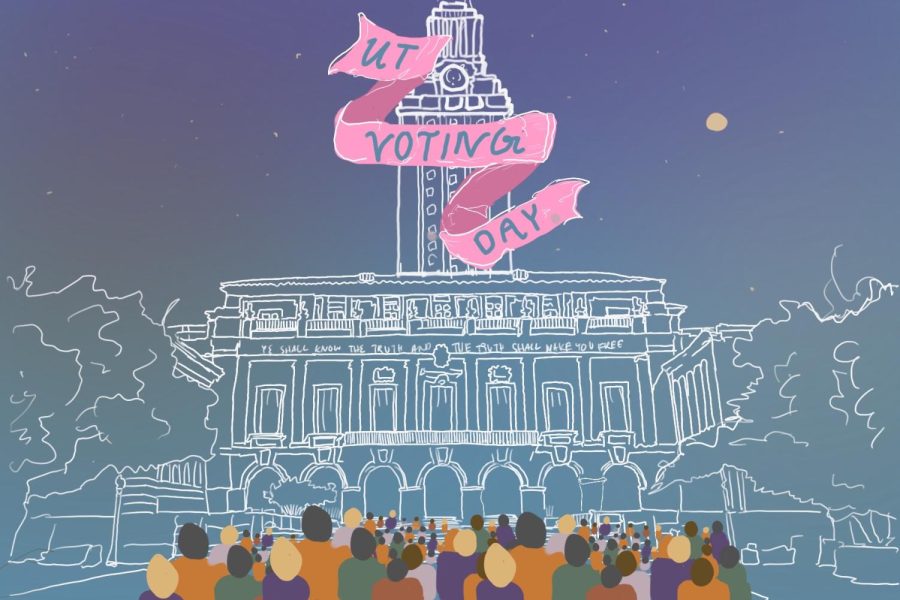Texas discourages student voting; UT must act
October 21, 2022
Editor’s note: A previous version of this column said that there is only one voting booth in the middle of campus, but it has been updated to reflect that there is only one voting location, not booth. The Texan regrets this error.
As the Nov. 8 midterm elections near, each passing day provides more evidence of Texas’ longtime struggle to make voting accessible. All across Texas, students are angry.
As college students, it’s no secret that we are consistently encouraged to vote. Multiple voter registration tables occupied Speedway for weeks, and students received messages almost daily with reminders regarding the upcoming election.
Yet, 18-29-year-olds have the lowest turnout among all age groups, as only half of youth voters typically cast their vote. Texas has one of the lowest youth turnout rates in the South.
Which forces the question: why?
Kerry O’Malley Gleim, a communications and leadership senior, talked about what Election Day looks like on campus.
“In the past, UT has only been allotted two polling locations on campus,” said Gleim, a former Hook The Vote. “This year, we discovered that one of the polling locations is at the LBJ graduate school, which is very far away from undergraduates — which is what makes up the majority of the student population at UT.”
The lack of polling locations continues to be a large problem on campus. With only two voting locations on campus, undergraduate students experience traffic as they are directed to just one building to cast their ballots. Having only one voting location in the middle of campus is simply impractical given the campus population.
This issue may result in students choosing not to vote. Given the number of students voting on Election Day rather than voting early, and with little places to do so, long lines become just one thing that makes voting especially difficult for young voters.
Logically, there should be an easy solution: add more polling locations. Travis County tried, but the federal government stopped them.
Bridgette Escobedo, director of Travis County’s elections division, explained why there’s not more polling locations on campus.
“In 2020, the Department of Justice came (to Austin) and did site evaluations across our county for all polling locations and (checked) for ADA compliance. Several sites in 2020 did not pass, including sites on the UT campus,” Escobedo said.
Escobedo said that the DOJ said the Perry-Castañeda Library did not meet ADA requirements due to its slope and lack of parking availability for the public. As a result, there continues to be a lack of voting locations for undergraduates. It is now in UT’s hands to make buildings more ADA compliant.
“It’s on UT to remedy these things,” Escobedo said. “We are working with UT staff to add additional sites that will meet the requirements.”
Both Texas and UT need to make active changes to improve voting accessibility. As for the state, Texas must make it easier for college campuses to add voting sites to ensure that their youth constituency can cast its vote. Through assisting campuses with this endeavor, Texas could potentially see an increase in youth turnout.
As for action UT can take, it must continue working with Travis County to establish more polling sites that comply with ADA regulations. It’s imperative that UT acts with urgency as state politics deal with many issues that directly affect students.
Texas and UT must work toward making voting more efficient for students so that they can create not only an Austin, but a Texas, that represents all.
Carr is a journalism freshman from Dallas, Texas.











